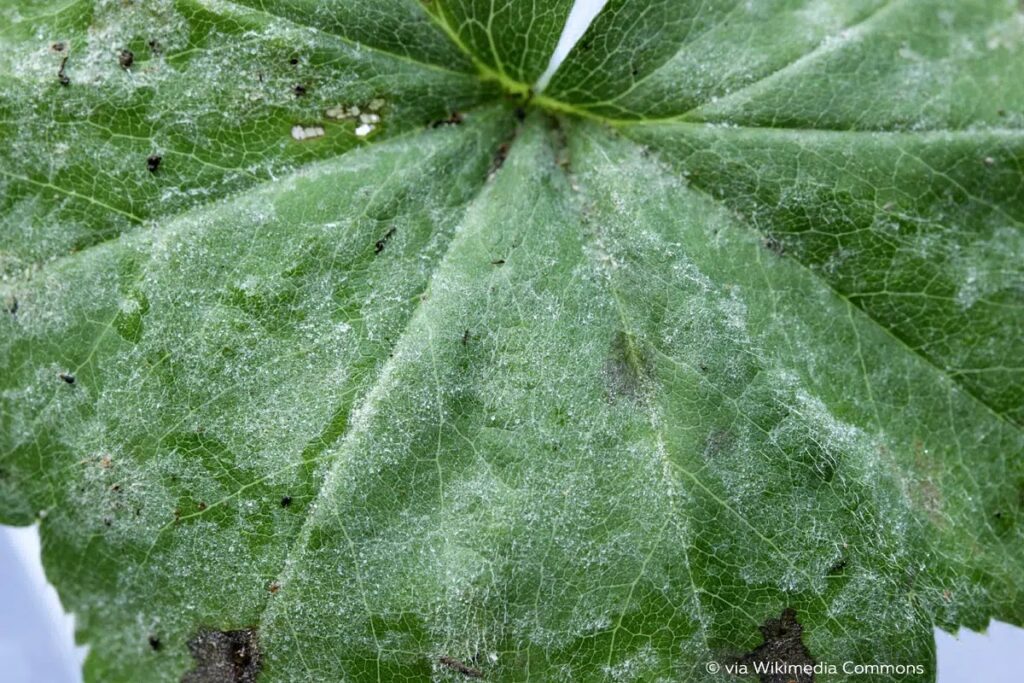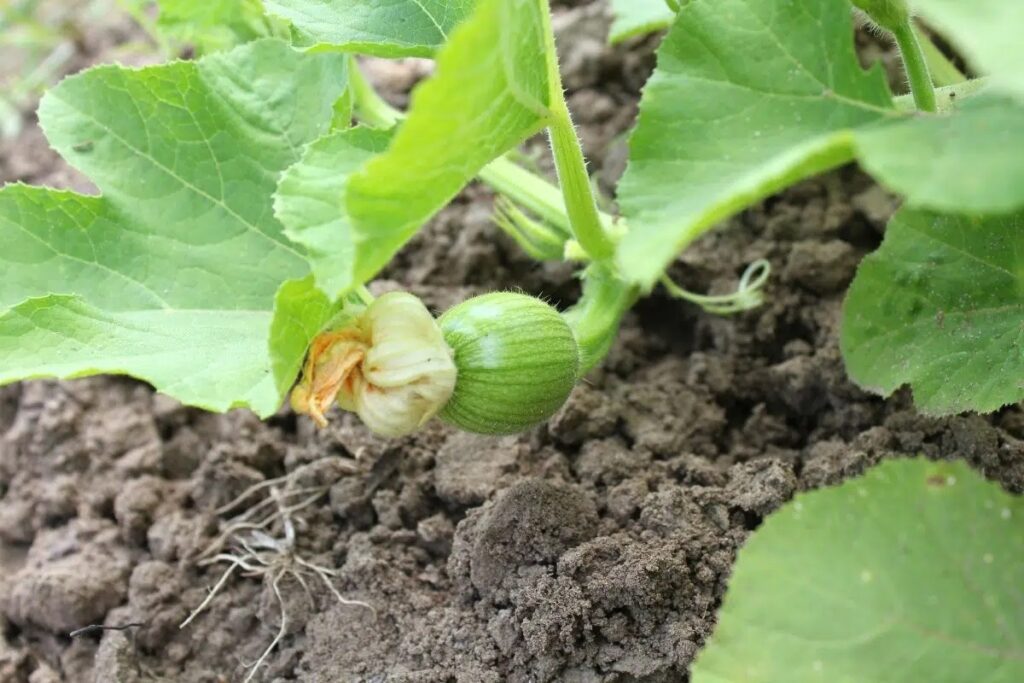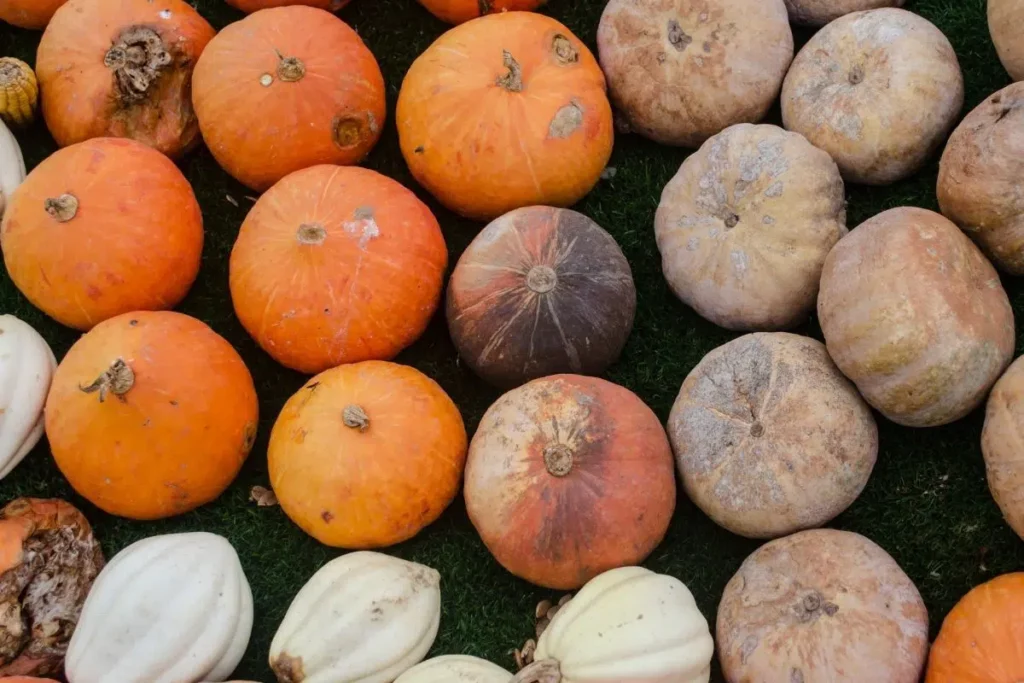Pumpkins are very popular in the home garden. Despite good care and proper cultivation, the pumpkin may not develop splendidly. If necessary, the pumpkins turn brown and fall off.
Contents
- 1 The causes
- 2 Powdery mildew (Erysiphe cichoracearum)
- 3 Downy mildew (Hyaloperonospora parasitica).
- 4 Japanese beetle (Popillia japonica)
- 5 Humid climate
- 6 Lack of nutrients
- 7 Preventing diseases
- 8 Fertilize pumpkin properly
- 9 Regular watering
- 10 Stripping flowers
- 11 Frequently asked questions
- 12 How do I optimize the supply of nutrients?
- 13 Author
The causes
Pumpkins (Cucurbita) are considered plants that require little care. The various cultivated species thrive magnificently and are a guarantee of a bountiful harvest. If the fruits fall off and turn brown over time, there are several causes for this.
Powdery mildew (Erysiphe cichoracearum)
Powdery mildew is a fungal disease. The fungus attaches itself to the upper side of the plant’s leaves. There it penetrates deep into the individual cells. In the early stages, you can recognize powdery mildew by a white fungal tangle. Over time, the webs turn brown. The spots get progressively larger as the leaves dry out. The pumpkins fall off in the final stage of the disease.

Tip: To avoid infestation with powdery mildew, choose tolerant and resistant pumpkin varieties.
Downy mildew (Hyaloperonospora parasitica).
Downy mildew is a pathogen that often attacks cucurbit plants during the growing season. The spores spread to the crop from old plant debris in the soil. The fungus develops magnificently during alternating dry and wet periods. Initially, yellow to brown spots form on the plant. Later, the leaves become more discolored and wither. If you do not take appropriate measures promptly, the entire plant will be affected. To preventively avoid the fungal disease downy mildew, it is recommended to plant at wide intervals. Moisture favors the development of the fungi.
Japanese beetle (Popillia japonica)
The Japanese beetle is an Asian pest that poses a threat to native crops. The pests live in moist meadows and feed primarily on roots. Between May and August, the adult beetles feed on the plants. Infested leaves turn brown and fall off.
Tip: Prevent infestation of the squash plant with mechanical tillage. Since the larvae of the beetles live in the soil, you prevent the survival of the pests by scouring the soil
Humid climate
A humid environment is harmful to the cucurbita. Fungi then form quickly. In addition, the plant does not absorb nutrients properly. If you water the plant too much or incorrectly, the leaves may turn brown and the fruits may fall off.
Lack of nutrients
The pumpkin is a highly consumptive plant. The nutrient requirement is high. If the plant produces too many leaves and fruits, an adequate supply of important nutrients is no longer guaranteed. As a result, leaves discolor and fruits may drop.
Preventing diseases
Various diseases and pests can attack the plant. The fruits of the pumpkin turn brown and fall off. With the right measures, it is possible to strengthen the plant and protect it from diseases. Regular removal of infested foliage is recommended. Provided that pests have attacked the pumpkin plants, fungicides help to fight them effectively.
Fertilize pumpkin properly
Adequate supply of essential nutrients is the basis for a successful pumpkin harvest. Meanwhile, you can prevent damage to the pumpkin with organic fertilizers such as garden compost. The following fertilizers are suitable for the plant:

- Nitrogen
- Potassium
- Plant slurry
- Horse manure
Regular watering
Pumpkins do not like a humid climate, but they need water regularly. A dry soil will hinder the pumpkin plants from growing. When watering, focus directly on the roots. Damp leaves create an environment conducive to disease and pest development.
Stripping flowers
Stripping the flowers has a specific purpose. When pumpkins grow and thrive on their own, numerous fruits form on the plant. If you want to have a large pumpkin instead of many small fruits, you should germinate the plant. When you prune, you help the plant focus on growing a few fruit specimens. Cut back the foliage in June, leaving only two leaves per vine. Gardeners should consider how many pumpkins are desired and pinch out the remaining flowers, otherwise the fruit will fall off.
Frequently asked questions
How do I optimize the supply of nutrients?
You should remove fruits from the plant that are not well developed. This ensures that the good fruits are better supplied with nutrients.


